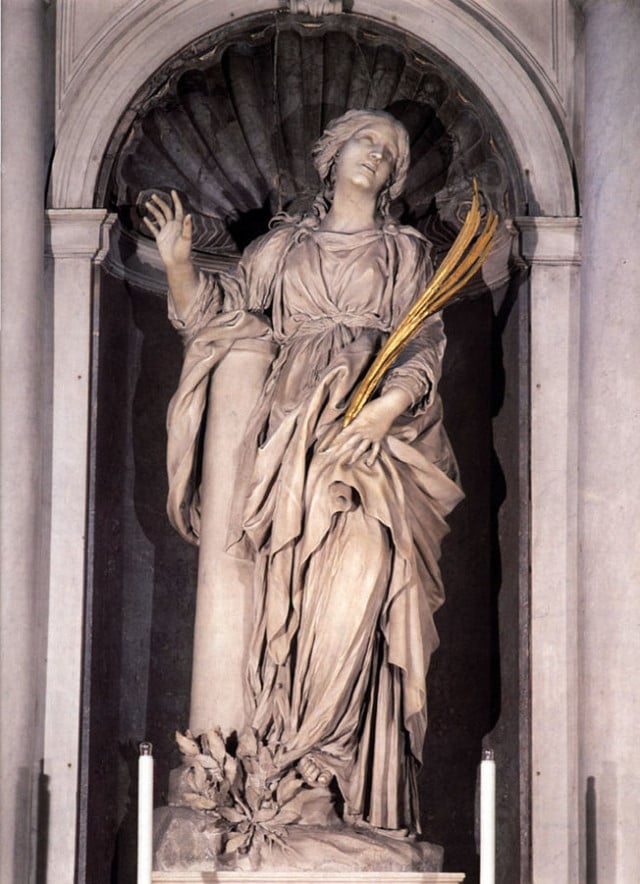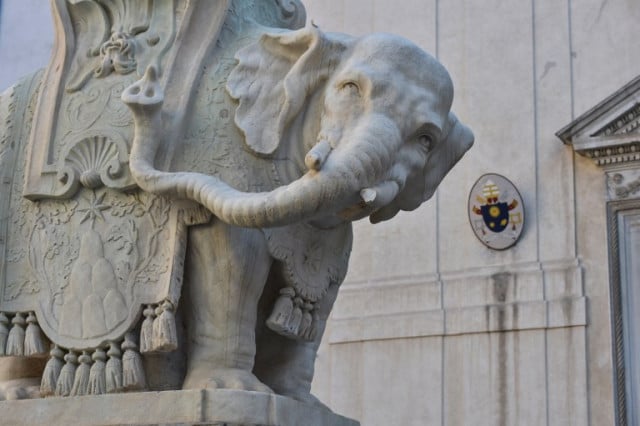A statue of Saint Bibiana by Italian master Gian Lorenzo Bernini had a finger knocked off as it was returned from an exhibition in the Galleria Borghese.
The marble statue, which depicts the Roman martyr holding a palm leaf, was left missing the fourth figure of the saint's right hand. In these photos, all that remains is a small stump.
The accident reportedly happened as the statue was being lifted back into place above the altar of Santa Bibiana, the church in central Rome for which Bernini created it in 1626.
The newly restored work had been on loan for the first time in its history to the capital's Borghese Gallery, which recently hosted a major exhibition of the Baroque sculptor's masterpieces.
“The Borghese Gallery requested the statue for a Bernini exhibition and we couldn't say no,” Carlo Marisi, one of the church's priests, told Il Messaggero.
“But when it came back it wasn't put into place right away and while they were positioning it they accidentally brought it into contact with the wall. That's how it lost a finger.”

Saint Bibiana in situ with all her fingers still intact. Photo: WikiPaintings, CC BY-SA 3.0
Bernini is famed for his virtuoso rendering of details, including his figures' delicate hands and fingers, which are infamously difficult to carve in marble without snapping.
The curator of the Borghese exhibition specifically praised the skill that went into Saint Bibiana's now broken hand, writing in the show's catalogue: “The fingers of the right hand, spread and suspended in the air, are a true miracle of technique.”
It's not the first of Bernini's works to be damaged, though until now members of the public have been to blame. In 2016, vandals broke off part of a tusk on the Elephant and Obelisk, a Bernini sculpture in Rome's Piazza della Minerva, while the year before that Dutch football fans filled his Barcaccia fountain at the foot of the Spanish Steps with empty bottles and beer cans.

The broken tusk. Photo: Andreas Solaro/AFP
Other Italian artworks to suffer damage include a 600-year-old statue in Florence's Galleria dell'Opera di Santa Maria del Fiore, which had a finger snapped off by an American tourist, and Pio Fedi's famous statue of the Rape of Polyxena, also in Florence, which also lost a finger off one of its figures.
The Drunk Satyr statue in Milan's Brera Academy, meanwhile, lost a leg to a visiting student who climbed it to take selfies. And tourists in Cremona broke off part of the city's prized statue of Hercules reportedly doing the same thing.



 Please whitelist us to continue reading.
Please whitelist us to continue reading.